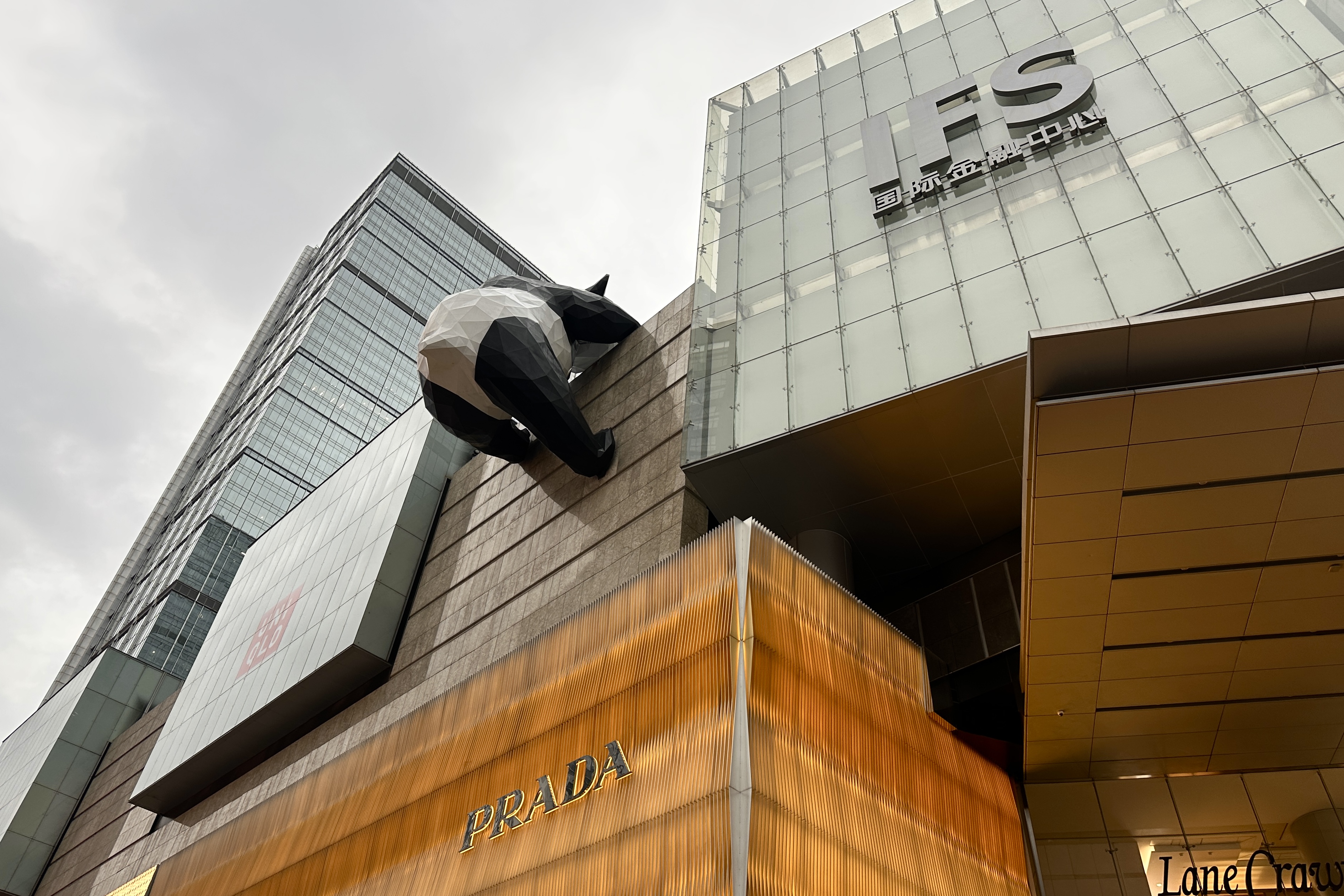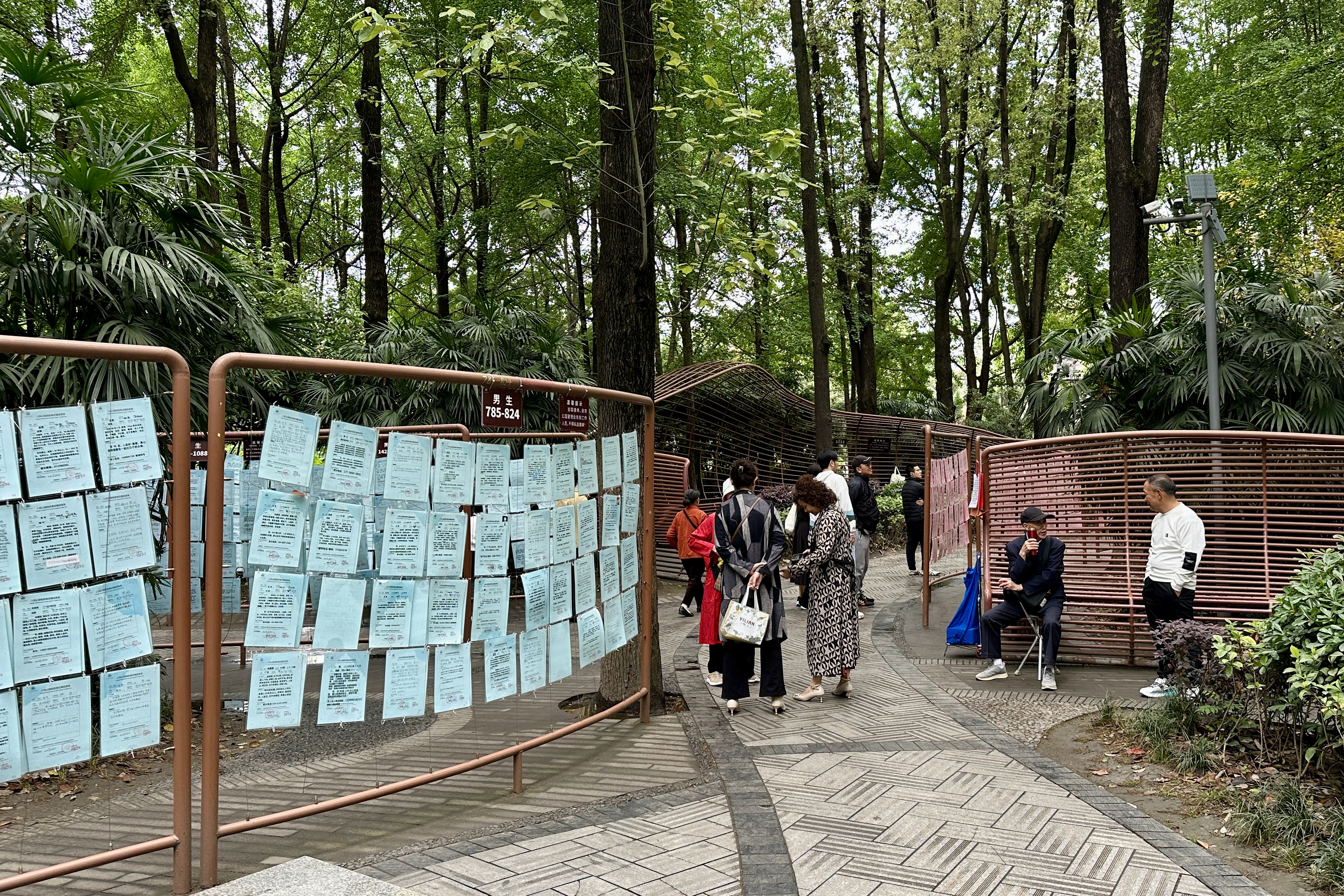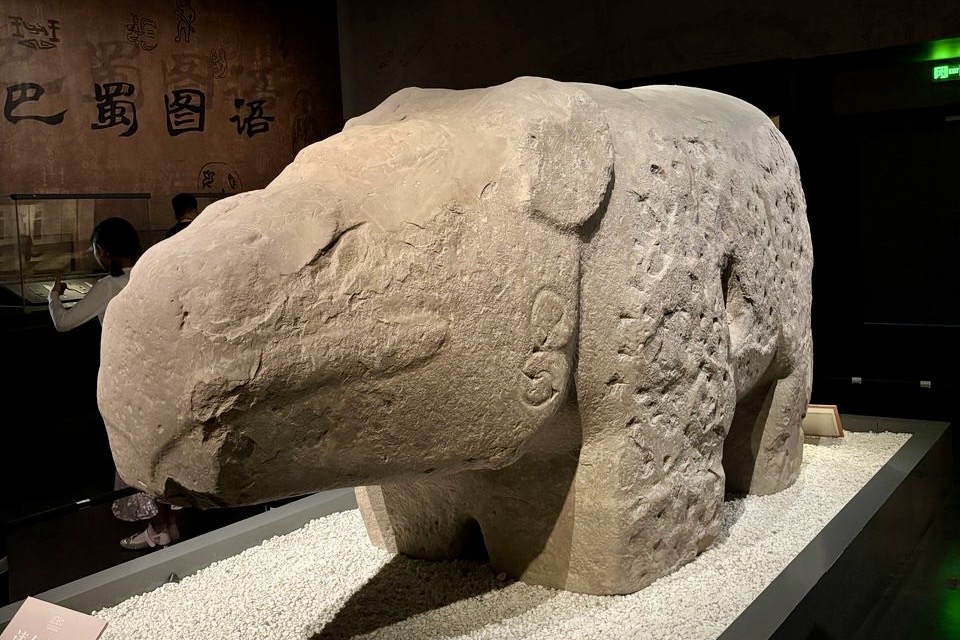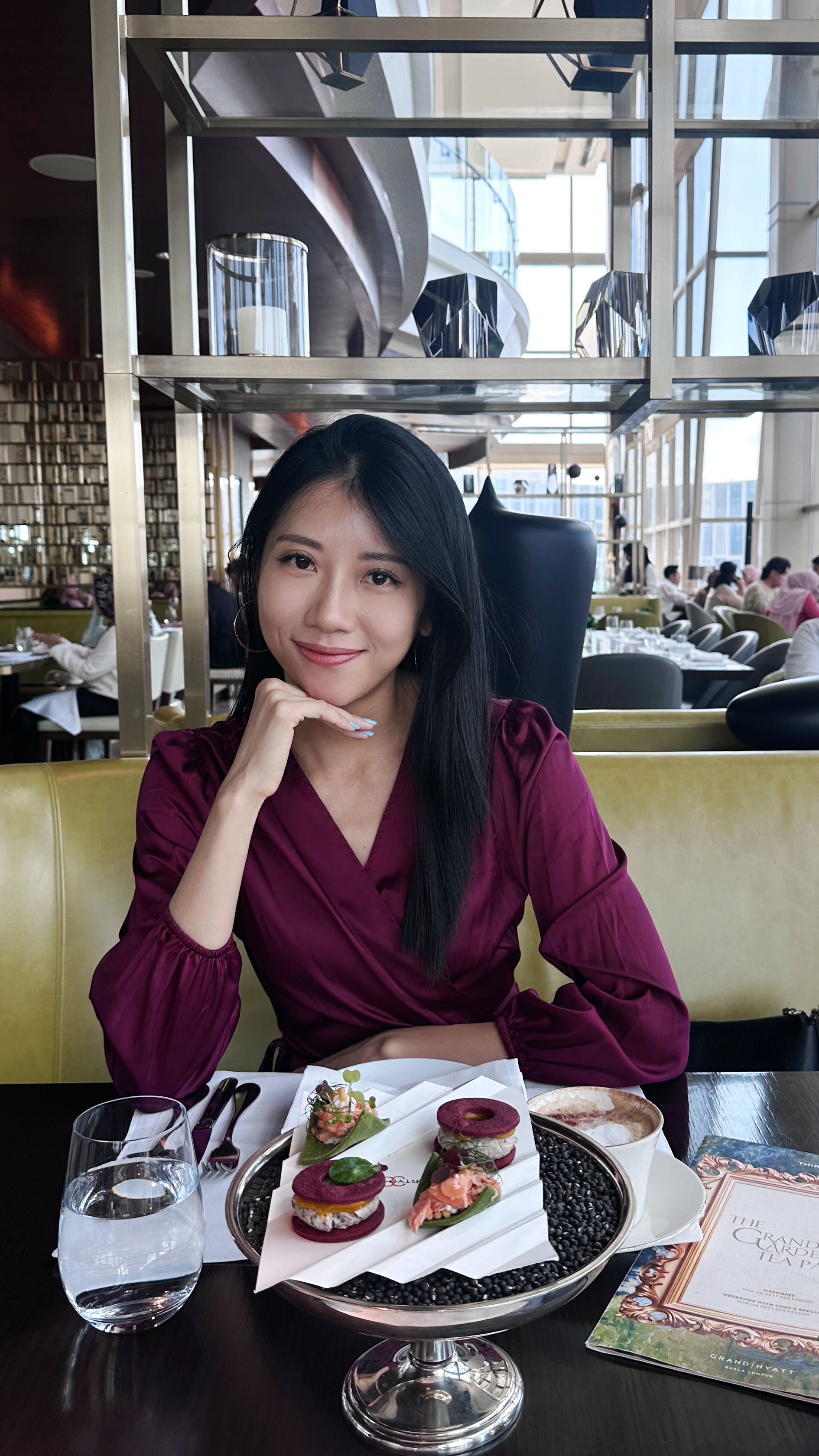
Curator’s statement
Chengdu is a city that invites you to slow down and savor life — whether it’s through the rich aroma of a bowl of spicy noodles, the playful charm of giant pandas or the quiet rhythm of tea sipping in a century-old courtyard. What makes Chengdu special to me is its balance between deep-rooted tradition and modern vibrancy. This is where ancient alleys and temples coexist effortlessly with sleek shopping districts and street art. Traveling here with my family allowed us to experience not just the sights, but the soul of the city: warm, laid-back and full of stories. It’s a place that doesn’t rush to impress, but gently pulls you in.
The Fora Difference
Book with Jocelyn to access exclusive perks and experiences on your trip.
Killer perks
Free upgrades, spa credits and more—we got you
Personalized recs
Customized travel planning for your style
Insider knowledge
Expert advice from people who’ve actually been there
Where to stay
Unlock perks by contacting Jocelyn to book your trip.
Day 1: Pandas, ancient ingenuity & modern indulgence

IFS Chengdu
Morning – Panda Valley: A Tranquil Encounter with China's Treasured Icons
Our day began early with a private car ride from our hotel near the historic Kuan Zhai Alley to Panda Valley in Dujiangyan, roughly a one-hour and 45-minute drive. Departing at 8 am proved to be a wise choice — the valley was still serene, and the early crowd hadn’t yet poured in. Unlike the bustling Chengdu Research Base of Giant Panda Breeding, Panda Valley offers a more intimate, less commercialized experience. It felt like a sanctuary in every sense.
Here, we got to watch these gentle giants up close, unbothered by crowds. While the iconic panda celebrity Huahua resides at the Research Base, Panda Valley had its own stars — like Meilan, who charmed us with his goofy antics. Some pandas were active, tumbling around their enclosures or munching on bamboo with laser focus. Others napped lazily under the trees. We also encountered red pandas — smaller, more agile and surprisingly feisty. They roam the park more freely, adding a touch of the wild to the experience.
Panda Valley is part of China’s broader efforts to reintroduce captive-born pandas into the wild. The facility prioritizes a naturalistic environment and research-based conservation. Entry is 55 Yuan — a small price for such a memorable morning.
Lunch – Rustic Flavors at 竹竹巴農家菜 (Zhu Zhu Ba Farmhouse Cuisine)
After a morning of panda joy and little more than a quick bite for breakfast, we were ready to feast. Our driver brought us to a local gem: Zhu Zhu Ba Farmhouse Cuisine, a rustic-style restaurant that serves up authentic Sichuan countryside flavors. The standout dishes included:
辣子雞 (Chili Pepper Chicken): Crispy, aromatic bites with a punch of spice.
臘肉 (Chinese Cured Meat): Smoky, savory slices of pork packed with umami.
麻婆豆腐 (Mapo Tofu): A silky, spicy explosion — a true Sichuan staple.
The food was delicious and hearty — exactly what we needed after an active morning.
Afternoon – Dujiangyan Irrigation System: Engineering Marvel of the Ancient World
Just a short drive away lies one of the most remarkable feats of ancient Chinese engineering — the Dujiangyan Irrigation System, a UNESCO World Heritage Site. Built in 256 BCE during the Warring States period, this system is still operational and has irrigated the Chengdu Plain for over 2,000 years. Its design, which channels and controls the Minjiang River without dams, showcases the ingenuity of its creator, Li Bing, and is a symbol of harmony between man and nature.
We strongly recommend hiring a guide — the site is rich in historical and technical detail that can be lost without context. Some must-see highlights include:
Yuzui (Fish Mouth Levee): Divides the river into inner (for irrigation) and outer (for flood control) streams.
Feishayan Spillway: Controls the flow and reduces silt — an early form of ecological flood management.
Baopingkou (Bottle-Neck Channel): Distributes water into the Chengdu Plain with precision.
We also crossed the Nanqiao Bridge, a traditional covered bridge offering sweeping views of the Minjiang River and surrounding green mountains. While we visited during the day, it’s worth noting that at night, the area transforms with a magical glow known as the Blue Tears. This is a bioluminescent-like phenomenon reflected off the water. If your schedule allows, return in the evening for this ethereal sight.
Evening – Chengdu IFS: Art, Fashion & Local Flavor
After some rest back at the hotel, we dove into Chengdu’s vibrant urban life at Chengdu International Finance Square (IFS). This massive lifestyle complex in the heart of the city offers an upscale blend of retail, dining and entertainment. One of the most iconic features is the giant panda installation — affectionately nicknamed “I Am Here” — climbing over the Prada store's rooftop. It’s both quirky and symbolic, marrying traditional cultural love with modern creativity.
Post-shopping, we dined at 陶德砂锅 (Tao De Sha Guo) on Chunxi Road — a local chain specializing in Sichuan clay pot cuisine. This was hands-down our favorite meal in Chengdu. Highlights included:
蒜蓉虾仁 (Garlic Shrimp): Juicy, fragrant and perfectly balanced.
鲫鱼水饺 (Crucian Carp Dumplings): Light, flavorful and surprisingly delicate.
野菌香包 (Steamed Bun with Wild Mushrooms): Earthy and aromatic, a wonderful vegetarian option.
If you're looking to explore more culinary delights, check out nearby Taikoo Li. This is an architectural and gastronomic gem, home to Michelin-starred restaurants, art spaces and stylish boutiques.
Nightcap – Heytea Milk Tea
To wrap up a packed and unforgettable day, we picked up Heytea, one of China’s most beloved milk tea brands. With inventive flavors and top-quality ingredients, it was a sweet finish to our day one adventure.
Day 2: Chengdu's cultural soul — Parks, art and fire in a pot

People's Park Chengdu
Morning – People's Park (人民公园): The Pulse of Chengdu's Slow Life
We began our day with a leisurely stroll through People's Park, one of Chengdu’s most beloved urban green spaces. It's more than just a park — it’s a living snapshot of local life. The morning air was crisp, and the park came alive with community spirit. Elderly locals gathered in clusters to play mahjong, chess and poker, some slapping their cards with a theatrical flair. We passed a choir of senior citizens accompanied by a small orchestra, singing nostalgic Chinese classics — their voices echoing with emotion and history.
At another corner, a group of older women were dancing in sync to lively music. This is known as 广场舞 (guǎngchǎng wǔ), or “public square dancing,” a popular morning and evening activity across Chinese cities. It’s more than exercise. It’s a social ritual, a communal expression of joy and vitality.
One of the most fascinating features was the Matchmaking Corner. Along the shaded paths, rows of handwritten personal ads were clipped to strings, guarded by eager matchmakers — often parents or grandparents. These “resumes” detail everything from height, income, education, home ownership, even family background and social connections. It felt like stepping into a living, breathing social phenomenon — part dating market, part tradition and fully captivating.
We didn’t enter the teahouses, but it’s worth noting that People’s Park is one of the best places to sip local tea, play mahjong, read newspapers or engage in loud, opinionated political debates — just like the locals. Entrance to the park is free, though tea house prices vary.
Lunch – 蓉城小館 (Rong Cheng Xiao Guan): Hidden Gem by the Park
Just steps from the park lies Rong Cheng Xiao Guan, a humble eatery that’s stood the test of time — over 30 years, in fact. Recommended by a local we met, this place was packed with flavor and authenticity. We ordered a feast:
鲜麻椒龙利鱼 (Fresh Pepper Dragon Fish): Light, tender fish laced with numbing Sichuan peppercorns — a perfect balance of heat and citrusy freshness.
小炒黄牛肉 (Stir-fried Beef): Savory and perfectly seasoned.
蒜泥白肉 (Garlic Pork): Thin pork slices with a bold garlic punch — rich, cold and addictive.
凉拌皮蛋 (Century Egg Salad): For the adventurous — a creamy, umami-packed dish that locals swear by.
红糖糍粑 (Brown Sugar Glutinous Rice Cakes): Sweet, crispy, chewy — an irresistible dessert that rounded off the meal.
Afternoon – Dongjiao Memory (东郊记忆): Where Chengdu’s Industrial Past Meets Creative Future
Next, we visited Dongjiao Memory — formerly the Dongqu Music Park, and once home to the Hongguang Electronic Tube Factory. This revitalized cultural hub merges Chengdu’s industrial heritage with artistic energy. Strolling past red-brick buildings, train parts and graffiti-covered walls, we felt like we were walking through a blend of retro history and street art cool.
The area pulses with creativity. We browsed vintage stores, trendy fashion boutiques and quirky cafés, while my sisters managed to score some fashionable pieces at good prices. If you’re lucky, you might catch live music or art exhibitions, as the park often hosts performances and cultural events.
Dinner – 蜀大侠火锅 (Shu Da Xia Hot Pot): Fiery Feasts & Face-Changing Drama
No trip to Chengdu is complete without hot pot. We dove right in at Shu Da Xia Hot Pot, chosen spontaneously after a casual recommendation from our driver. While Chengdu has countless hot pot joints, this one offered a memorable mix of bold flavors and traditional theatrics.
We ordered a 鸳鸯锅 (Yuanyang Hot Pot) — a dual-flavored soup base with mala (numbing-spicy) broth on one side and mild mushroom broth on the other. The mushroom soup was rich and comforting, while even the “mild” mala base packed serious heat — Chengdu locals’ spice tolerance is no joke! We dipped everything from beef slices to lotus root, tofu skin to mushrooms. The ingredients were fresh and satisfying, though the service left room for improvement — we had to flag staff down repeatedly.
But the real highlight? A Sichuan Bian Lian (变脸) performance — a magical act from Sichuan opera where performers change face masks in a split second. The performer even came table-side, transforming his face mask with dramatic flair. It was captivating, and added a cultural twist to the meal that left us impressed.
Evening – Kuan Zhai Alley (宽窄巷子): Nighttime Nostalgia & Tea Culture
We ended our day at Kuan Zhai Alley, or Wide and Narrow Alley, one of Chengdu’s most iconic historic districts. This trio of alleys dates to the Qing Dynasty and is now a beautifully restored cultural zone blending the past and present. The Wide Alley is more spacious and refined. It is lined with elegant tea houses and boutique stores. The Narrow Alley is intimate and lively, with local snack stalls, hidden bars and quirky souvenir shops.
While wandering, we were invited into a private tea ceremony (茶道, Cha Dao) — a meditative and graceful practice deeply rooted in Chinese culture. The tea master explained the nuances of tea aroma, shape and taste, guiding us through the delicate ritual. It was a serene and meaningful way to close out our vibrant day.
Day 3: A window into Sichuan’s past

A relic in Chengdu Museum
Morning – Chengdu Museum (成都博物馆): With only half a day left in Chengdu, we chose to slow down and immerse ourselves in the city’s rich heritage. We headed to Chengdu Museum, located just west of Tianfu Square — the symbolic heart of the city. The entrance was free, and the building itself is an architectural landmark, with clean, modern lines contrasting the depth of its historical content.
Spread across five spacious floors, the museum houses over 200,000 cultural relics, covering periods from the Neolithic Age to the Republican era. What truly stood out were the local artifacts from Sichuan. There were intricate Shu brocades, ancient bronze ware, shadow puppets and traditional costumes that offered a glimpse into both the imperial grandeur and grassroots culture of the region.
I was especially fascinated by the sections showcasing folk art and local operatic traditions. This added rich context to what we had experienced at Sichuan opera performances the night before. If you're someone who appreciates quiet learning and visual storytelling, this museum is a must. You’ll leave with a greater appreciation for Chengdu’s 2,000+ years of history as a cultural and political hub in western China.
Lunch – 纯阳馆 (Chun Yang Guan): Noodle Heaven in a Bowl
For our final meal in Chengdu, we made a beeline for Chun Yang Guan, a well-known local eatery famous for its noodle-based Sichuan specialties. Though the restaurant isn’t flashy, the food more than makes up for it.
Here’s what we ordered:
担担面 (Dan Dan Noodles): A classic dish of thin noodles tossed in a spicy, nutty sauce with minced pork. Rich, savory and satisfying.
豇豆面 (Cowpea Noodles): Served with chopped cowpeas for a fresh crunch and earthy flavor — a lesser-known gem.
红油抄手 (Red Chili Oil Wontons): My personal favorite. These plump wontons came drenched in a fragrant red chili oil — just spicy enough to tingle, but not overpower. The juicy meat filling had a comforting homemade quality.
This final meal was a flavorful send-off, highlighting just how diverse and layered Sichuan cuisine can be beyond the stereotypical “spicy” label.
Afternoon – Departure to Chongqing
After lunch, we returned to our hotel, gathered our luggage and made our way to our next destination: Chongqing — ready to dive into another city’s charms and flavors.
Need to know
If you have another day or two in Chengdu, consider adding these enriching stops to your itinerary:
Jinli Ancient Street (锦里古街): Adjacent to Wuhou Shrine, this lively, lantern-lit street recreates the flair of old Chengdu. Shop for local snacks, silk fans, handmade jewelry, and try street performances in a nostalgic setting.
Wuhou Memorial Temple (武侯祠): A tribute to Zhuge Liang, the brilliant military strategist of the Three Kingdoms period. The temple complex offers beautiful gardens, red walls and a deeply historical atmosphere.
Wenshu Monastery (文殊院): Chengdu’s largest and best-preserved Buddhist temple. It's a tranquil spot for spiritual reflection, vegetarian food and intricate architecture dating back to the Tang Dynasty.
Leshan Giant Buddha (乐山大佛): A UNESCO World Heritage site and the largest stone Buddha in the world, carved into a cliff face at the confluence of three rivers. It’s a couple of hours from Chengdu but well worth the trip.
Mount Emei (峨眉山): One of the Four Sacred Buddhist Mountains of China, offering scenic hikes, golden temples shrouded in mist, and the possibility of spotting wild monkeys. It’s also a perfect overnight trip if time allows.
Useful information:
The best time to visit are spring (March–May) and autumn (September–November) as they offer the most pleasant weather with mild temperatures and fewer crowds.
Mandarin is the main language, and English is not widely spoken, especially outside tourist zones. Baidu Translate is your best friend.
Google, Facebook, Instagram, WhatsApp and many Western apps are blocked in China. Download and test a reliable VPN before arriving.
WeChat (微信) is essential in China — it's used for messaging, maps, QR scanning, and even some payments.
Cash is accepted, but China is increasingly cashless.
Alipay (支付宝) and WeChat Pay are the dominant payment methods. Foreigners can now link international credit cards to both apps.
Metro: Chengdu’s metro is clean, affordable, and has English signage. Download the Chengdu Metro app or use Baidu Maps (with translation).
Didi (Chinese Uber) is very useful and has an English version of the app.
Private drivers can be worth hiring for out-of-city attractions like Panda Valley or Leshan.
“Mild” can still be very spicy. Ask for “不辣 (bù là)” if you want no spice, or “微辣 (wēi là)” for just a little.

Travel Advisor
Jocelyn Heng

Get in touch with Jocelyn
Did you like this guide? Reach out to customize and book your own experience. Or, just to chat about travel in general.
You can expect a response from Jocelyn within 1–2 business days. You’ll also be subscribed to our traveler newsletter (you can unsubscribe at any time).
For more inspiration and insider recommendations, check out our China page.